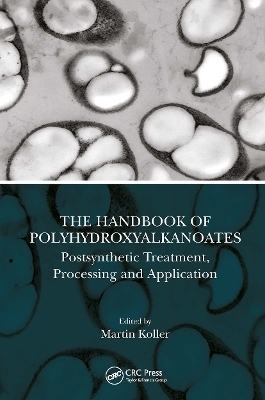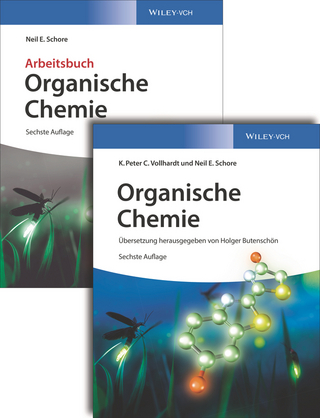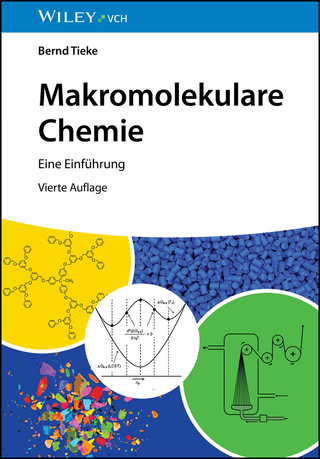
The Handbook of Polyhydroxyalkanoates
CRC Press (Verlag)
978-0-367-54115-6 (ISBN)
The third volume of the Handbook of Polyhydroxyalkanoates (PHA) focusses on the production of functionalized PHA bio-polyesters, the post-synthetic modification of PHA, processing and additive manufacturing of PHA, development and properties of PHA-based (bio)composites and blends, the market potential of PHA and follow-up materials, different bulk- and niche applications of PHA, and the fate and use of spent PHA items. Divided into fourteen chapters, it describes functionalized PHA and PHA modification, processing and their application including degradation of spent PHA-based products and fate of these bio-polyesters during compositing and other disposal strategies. Aimed at graduate students and professionals in Polymer science, chemical engineering and bioprocessing, it:
Covers current state of the art in the development of chemically modifiable PHA including mult-istep modifications of isolated biopolyesters, short syntheses of monomer feedstocks and so forth.
Describes design of functionalized PHA-based polymeric materials by chemical modification .
Illustrates preparation of bioactive oligomers derived from microbial PHA and synthetic analogues of natural PHA oligomers.
Discusses processing and thermomechanical properties of PHA.
Reviews advantages of PHA against other bio-based and conventional polymers with current applications and potential uses of PHA-based polymers highlighting innovative products.
Martin Koller was awarded his PhD degree by Graz University of Technology, Austria, for his thesis on polyhydroxyalkanoate (PHA) production from dairy surplus streams which was enabled by the EU-project WHEYPOL (“Dairy industry waste as source for sustainable polymeric material production”), supervised by Gerhart Braunegg, one of the most eminent PHA pioneers. As senior researcher, he worked on bio-mediated PHA production, encompassing development of continuous and discontinuous fermentation processes, and novel downstream processing techniques for sustainable PHA recovery. His research focused on cost-efficient PHA production from surplus materials by bacteria and haloarchaea and, to a minor extent, to the development for PHA for biomedical use. He currently holds more than 70 Web-of-science listed articles in high ranked scientific journals (h-index 23), authored twelve chapters in scientific books, edited three scientific books and four journal special issues on PHA, gave plenty of invited and plenary lectures at scientific conferences, and supports the editorial teams of several distinguished journals. Moreover, Martin Koller coordinated the EU-FP7 project ANIMPOL (“Biotechnological conversion of carbon containing wastes for eco-efficient production of high added value products”), which, in close cooperation between academia and industry, investigated the conversion of animal processing industry´s waste streams towards structurally diversified PHA and follow-up products. In addition to PHA exploration, he was also active in microalgal research and in biotechnological production of various marketable compounds from renewables by yeasts, chlorophyte, bacteria, archaea, fungi or lactobacilli. At the moment, Martin Koller is active as research manager and external supervisor for PHA-related projects.
1. Recent Advances in Chemically Modifiable Polyhydroxyalkanoates. 2. The Design of Functionalized PHA-Based Polymeric Materials by Chemical Modifications. 3. Amphiphiles from Poly(3-hydroxyalkanoates). 4. Bioactive and Functional Oligomers derived from Natural PHA and their Synthetic Analogues. 5. Processing and Thermomechanical Properties of PHA. 6. Additive Manufacturing of PHA. 7. Mechanical and Permeation Properties of PHA-Based Blends and Composites. 8. Competitive Advantage and Market Introduction of PHA Polymers and Potential Use of PHA Monomers. 9. Linking the Properties of Polyhydroxyalkanoates (PHA) to Current and Prospective Applications. 10. Hydrogen-Oxydizing Producers of Polyhydroxyalkanoates: Synthesis, Properties, and Applications. 11. Polyhydroxyalkanoates, their Processing and Biomedical Applications. 12. Polyhydroxyalkanoates (PHA) Based Materials in Food Packaging Applications. State of the Art and Future Perspectives. 13. Aerobic and Anaerobic Degradation Pathways of PHA. 14. Factors Controlling Lifetimes of Polyhydroxyalkanoates and their Composites in the Natural Environment.
| Erscheinungsdatum | 28.09.2023 |
|---|---|
| Zusatzinfo | 27 Tables, black and white; 99 Illustrations, black and white |
| Verlagsort | London |
| Sprache | englisch |
| Maße | 156 x 234 mm |
| Gewicht | 1380 g |
| Themenwelt | Naturwissenschaften ► Chemie ► Organische Chemie |
| Naturwissenschaften ► Chemie ► Technische Chemie | |
| Technik ► Umwelttechnik / Biotechnologie | |
| ISBN-10 | 0-367-54115-7 / 0367541157 |
| ISBN-13 | 978-0-367-54115-6 / 9780367541156 |
| Zustand | Neuware |
| Informationen gemäß Produktsicherheitsverordnung (GPSR) | |
| Haben Sie eine Frage zum Produkt? |
aus dem Bereich


